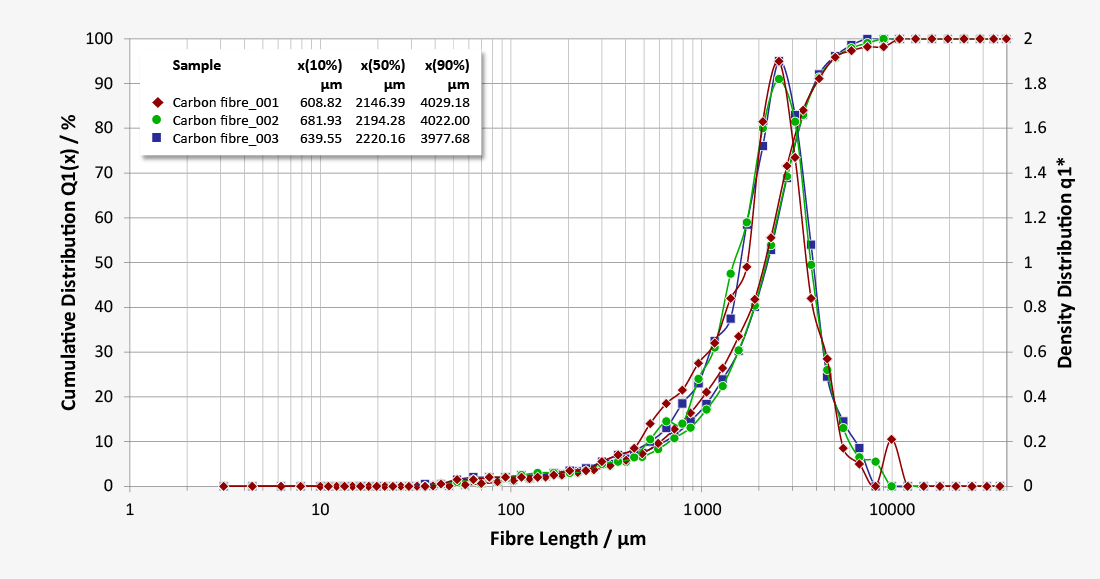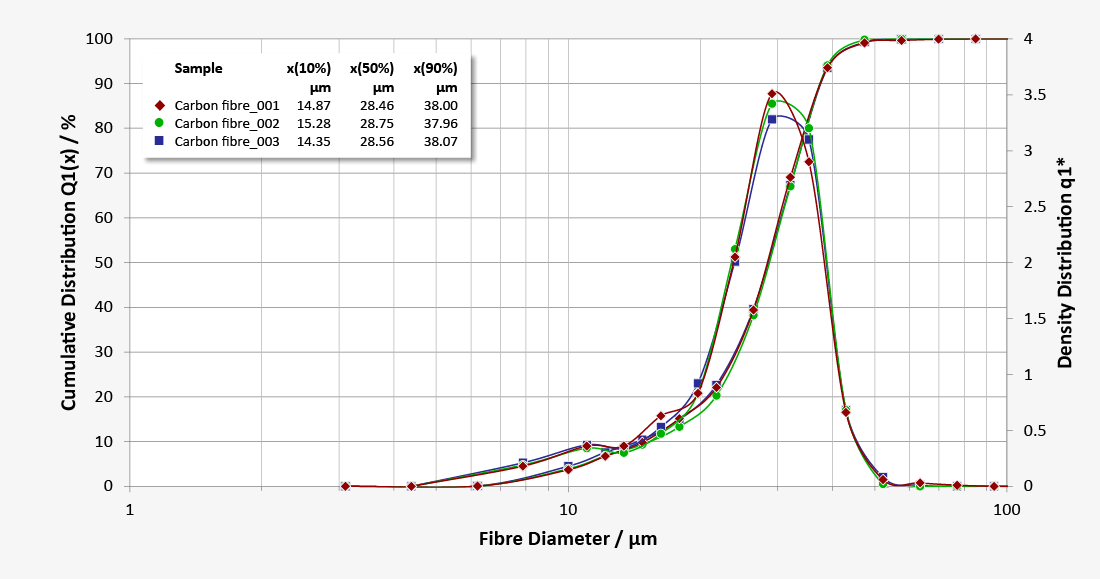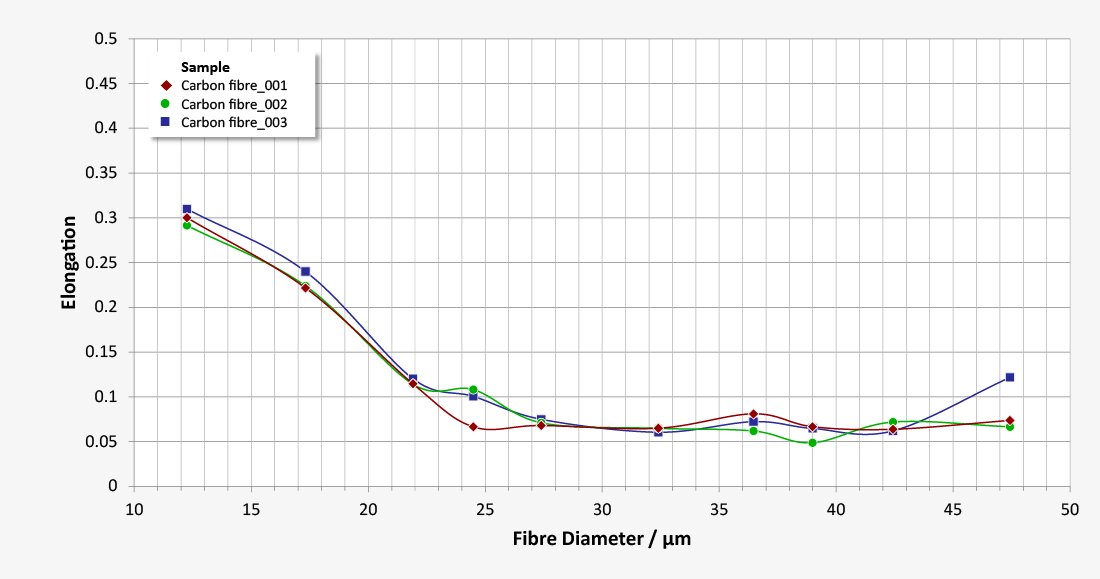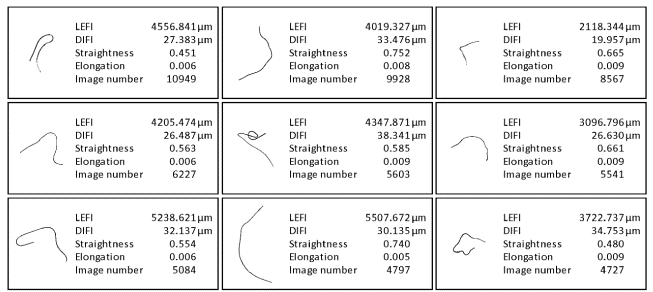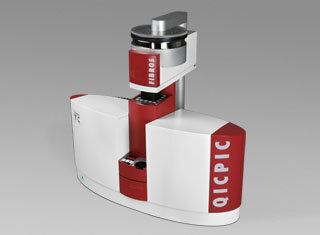Fibre length and fibre diameter analysis of carbon fibres with image analysis
There are various procedures for the production of carbon fibres. In this application, they are obtained from coal tar in a special spinning process. The raw product consists of fibres with lengths in the lower two-digit millimetre range with diameters of at least ~ 10 microns, and has a crimped structure. This leads to strong linking of the raw material, which has high electrical conductivity, good treatability with resins or other binders and additionally excellent thermal insulation. These fibres are used, for example, in high-performance filters, floor coverings, clutches and brakes, as well as composite materials.
Although their share in the finished product often only makes up a tiny amount of the formulation, this has a significant effect on the quality of the final product, for example in the form of improved conductivity, enhanced abrasion behaviour or through minimising shrinking behaviour. In turn, these properties depend on the shape characteristics of the carbon fibres. Analysing the length and thickness of the fibres places high demands both on the resolution capacity of the analysis system and on the separation of highly entangled fibres. The currently still widespread microscopic analysis with manual dispersion is very time consuming and has less statistical significance due to being highly user-influenced. Indirect measurement methods such as tensile strength, surface determination or flow measurement only provide rough characteristic values. The QICPIC image analysis sensor and the powerful FIBROS pre-disperser provide exact figures and values about the fibres in order to perfect the desired quality of the carbon fibre product.
Distribution of the elongation shape parameter
Elongation, in particular, is a useful descriptive shape parameter for fibres that illustrates the ratio of fibre thickness to fibre length and can assume values between 0 and 1. High values close to 1 indicate compact fibres and low values near to 0 indicate long fibres.
- Improvement of plastic compounds properties
- Formulation of antistatic and conductive coatings
- Reduction of the time required in fibre characterisation
- Reproducible and complete dispersion of entangled fibres
- High resolution for correctly determining the fibre length and fibre thickness
Download application notes for detailed information
Forgot your password?
Please enter your username or email address. Instructions for resetting the password will be immediately emailed to you.
Are you interested in additional content? Please register an account. After confirming the registration link brochures, application notes and other documents on particle measurement will be available for download.
Application strengths
- Rapid and reproducible dispersion and measurement
- Also powerful with entangled fibres
- High statistical significance due to several thousand individual fibres per analysis
- Length-to-thickness ratio > 1,000 possible
- Reproducible, user-independent results
Customer benefits
- Timely production inspection thanks to fast fibre characterisation
- Improvement of physical fibre properties
- Reduction of production defects
- Avoidance of operator influences
- Meaningful and reliable results












